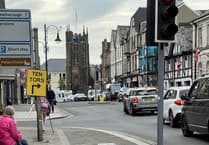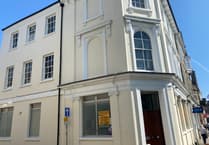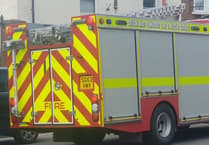A MARY Tavy man?s picture perfect memory has helped him to share his recollections of the days of the golden age of the railways when Okehampton was an important railway town. George Cutland of Mary Tavy noted the resurgence of railway interest in Okehampton, and set about making a record of life in the town when he was growing up. George, now 88, has turned the clock back and pressed his memory cells into action to recollect the station when he was a lad and during the 1930s when his father was a guard and lived above the station at No. 6 Highland View. As a result, he has produced a fascinating sketch of the railway station layout as it was some 70 years ago, even down to the names of many of the staff! George?s detailed sketch looks like a labour of love, but he insists it was relatively simple to do. ?It didn?t take all that long. It is fresh in my mind. As a lad, I spent many a happy hour playing on the platform and riding on the trains,? he said. Since drawing up the sketch, lots of other names have come to mind including Bill Pring, the Permanent Way inspector for many years. The station, of course, included the obligatory W H Smith & Son bookstall and refreshment rooms. Mr Sam Gimblett was a long service manager who lived at Tavistock and would travel up each morning on the up train with the morning newspapers. George also remembers Vera Maynard who was a manageress. In those days, Okehampton was an important station on the Plymouth/Waterloo line, with its goods and passenger traffic, coupled with all the activity ot the branch lines, all under the management of a station master. Taking into consideration the Meldon Quarry activities and the Military Sidings, most families in Okehampton had some connection with the railways. S P Gunn & Sons, the well-established coal merchant had a large depot at the top of Station Road with their own red wagons for coal distribution. There were BP fuel storage tanks and other companies from time to time had storage facilities here. There was a variety of coach services to and from the station, but the Plume of Feathers introduced a small bus in the 1930s which met every train and, from memory, George believes it was three old pence to the Plume of Feathers or six old pence to your house. Prior to this there was an open coach and pair of horses driven by ?Bussy? Bates. George remembers he and his friends would try to ride on the steps at the back of the coach. However, wise to this ruse, the driver would periodically crack the whip over his shoulder to try and catch any of the boys hitching a free ride. In the heyday of the railway, more or less everything came and went by train. George remembers: ?They used to use the railways to ship away Dartmoor ponies to go to the coal mines in Wales.? Geroge said he had set about sketching the layout of the 1930s station because he felt it was important to record this piece of Okehampton?s history. ?I have always been interested in the railways,? he said. ?I used to be able to rattle off the names of all the stations between Okehampton and Bude or Okehampton and Plymouth,? he added. Passmore & Sons were highly-respected hauliers and as long ago as 1870, Richard Passmore was appointed delivery agent for the London and South Western Railway, continuing with the Southern Railway. A familiar sight was Mr Middleton with horse and cart at the station until with modernisation he was replaced with a motor vehicle. Highland View, most of Park View Terrace and Parklands were occupied by railway staff with Highland View actually owned by the railways. George?s sketch gives a fascinating insight into the station comrades of his youth and of the staff, who worked even during the Depression, the impact of which is difficult to comprehend today. George, born on April 8, 1916, joined the old Okehampton Electric Co. Ltd, after leaving school in 1930 and is one of only two serving employees of that time. The Okehampton Electric Co. Ltd along with many other local small electricity undertakings was taken over by Christy Bros of Chelmsford, trading as the West Devon Electricity Supply Co. Ltd and George continued to work in Okehampton after the acquisition. In 1937, promotion beckoned and he moved to the head office, based in Tavistock, where he worked until he joined the Devonshire Regiment for War Service. On nationalisation in 1948, the West Devon Electricity Supply Co. Ltd became part of South Western Electricity Board and George continued at Tavistock until his retirement in 1976 after 46 years in the electrical business including his Military Service. He reached the position of chief clerk with SWEB. George lives at Mary Tavy and even with his busy life in the electrical industry has still found time for plenty of other interests - a parish councillor for 30 years and still president of the Elephant?s Nest cricket team, Mary Tavy reading room and Mary Tavy Coronation Hall, where he was a founder member. With a colleague, the late Frank Maunder, George helped raise the money to celebrate the coronation, starting in 1953 until the dream finally came to fruition with the opening of the hall in 1961 after eight years hard work. Despite leaving Okehampton all those years ago, George has an acute memory of the times, but he is not one to dwell on the past. He continues to take a keen interest in local issues taking delivery each week of both the Okehampton and Tavistock Times Gazette.



